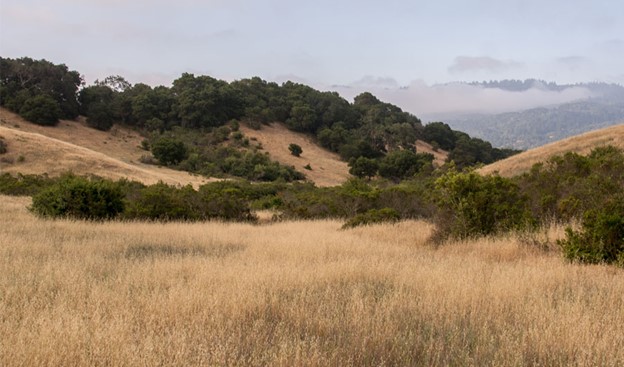Agroecosystems, ecosystems that have been modified by human beings for agricultural purposes, have become a topic of study as we focus on shifting agricultural practices towards sustainability. When you picture an agroecosystem what do you see? You might think of rolling fields of grain or a small backyard garden, but would you think of the Santa Fe National Forest or the California grasslands? I would argue that the Earth itself is an agroecosystem.

Human beings currently manage an approximate 97% of land to some extent. Much of that land is used agriculturally, even if only to a small extent. The Forest Service manages and protects our national forests, these protections allow wild edible plants to grow, and in turn allows people to forage for them. Our national forests are also grazing pastures for the cattle that roam them. Agroecosystems exist on a continuum from agroecosystems with minimal human interference to industrialized monoculture farms. Would our national forests not fall on the minimal human interference side of the continuum?
In California government agencies are scrambling to save the grasslands. These biomes are necessary for the health of all California ecosystems, and they are rapidly disappearing. Historically, these grasslands were maintained by Native Californians who contributed to their health through management of the land and the species that lived on it. When Native Californians began to be pushed out of the picture the health of the grasslands began to decay. These grasslands relied on management, much of it in the form of harvesting food, to survive. Without such interference from people these grasslands are rapidly disappearing. When this management is added back into the picture the grasslands begin to recover.

This is all part of the bigger picture that human life is not separate from the ecosystem as a whole. In recent centuries human beings have begun to separate ourselves from the ecosystem, both physically by building cities and mentally by changing our view of our place in the ecosystem. This viewpoint has greatly contributed to climate change and many argue that it’s necessary for us to change our view of ourselves in connection to our ecosystem to truly make progress in reversing climate change. We are animals and we have evolved within the ecosystem. We are as necessary to a healthy ecosystem as wolves are to Yellowstone, to remove ourselves is to remove a key part of a balanced ecosystem. While our interference in the ecosystem has become far greater than other species, our interference is still no different from the interference of a bird keeping a stock of seeds for winter.
When a squirrel buries an acorn there’s a chance that squirrel will never dig it up again. Squirrels only retrieve about 95% of their buried acorns, not to mention the possibility that the squirrel never makes it through winter, and in these situations it’s possible for that acorn to sprout and grow into an oak tree. This oak tree will produce food for the future squirrels of the world and those squirrels will bury those acorns allowing the cycle to repeat. This keeps the forest and the squirrels alive. Is an oak forest the agroecosystem of squirrels?
When we define our production of food within an ecosystem as separate from “the ecosystem” we separate ourselves from the ecosystem as a whole. At the end of the day, our actions growing food are no different in nature than the actions of a squirrel stockpiling acorns. Our actions may have greater influence due to the destructive nature of modern industrial farming yet it remains the same principle. Our influence on the ecosystem’s production of food is everywhere and so ingrained in the structure of the world that entire biomes rely on our influence to survive. It will be impossible to approach agriculture in a sustainable way while our influence on the ecosystem through agriculture is still viewed as separate from the broader ecosystem. The Earth itself is an agroecosystem.
-Posted by Alex

